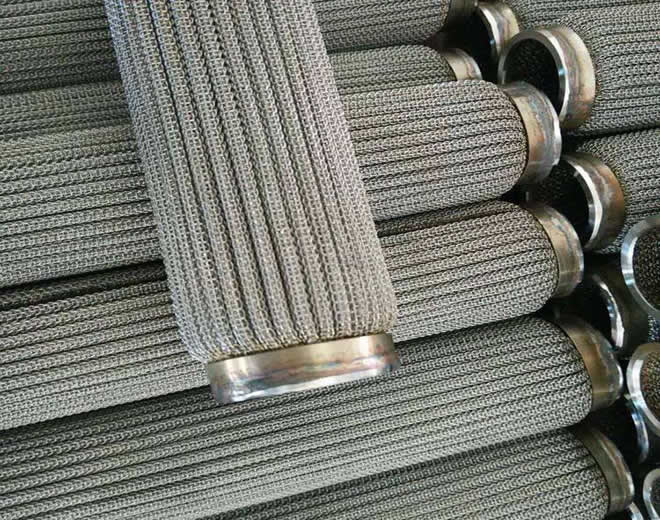
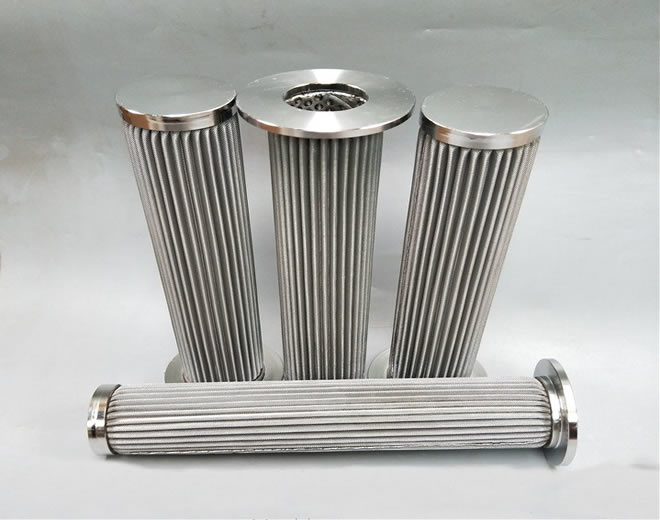
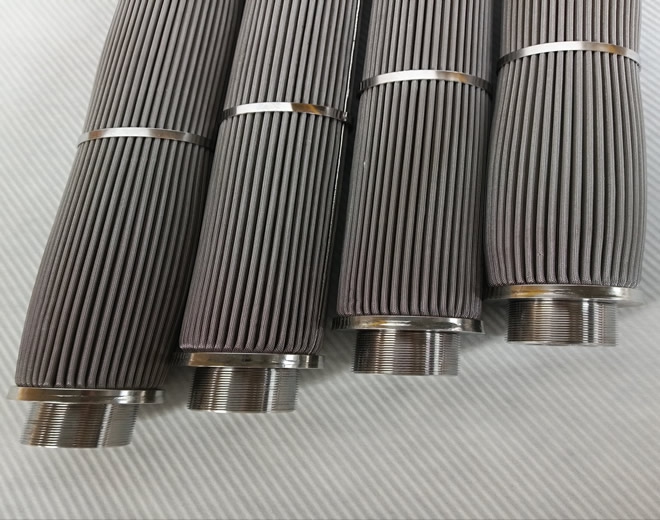
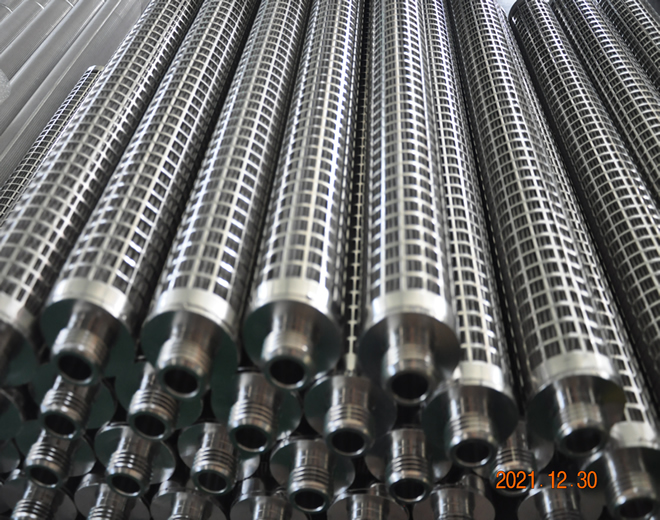
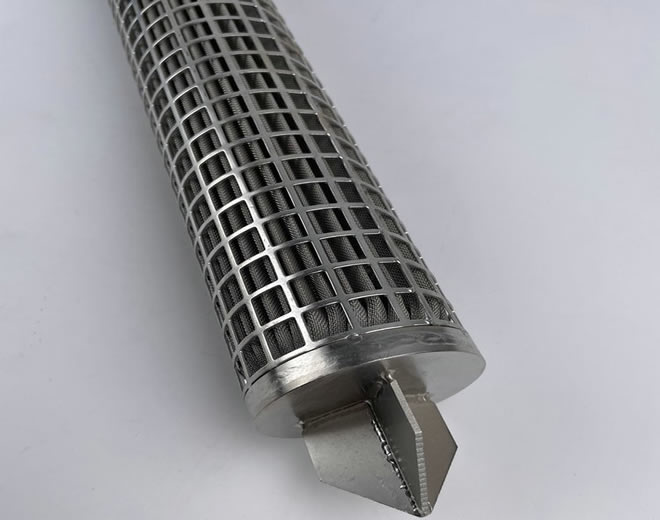





In various demanding industrial filtration applications, the porous metal fiber sintered filter element has become an indispensable high-end filtering component, representing the perfect integration of precision filtration technology and materials science.
A porous metal fiber sintered filter element, commonly referred to as a sintered metal fiber filter cartridge or metal fiber felt filter, uses a unique filtering medium. Instead of traditional metal powders, its core material is composed of extremely fine (micron-scale) metal fibers (such as 316L stainless steel, Hastelloy, Inconel, etc.). These fibers are layered and stacked, then sintered together in a high-temperature vacuum furnace.
This process causes the millions of metal fibers to fuse at their crossing points, forming a rigid, three-dimensional network of interconnected pores. The filter element is manufactured by rolling, welding, and encapsulating this sintered felt into tubular or disc-shaped filter components.
Compared to traditional sintered powder filters, wire mesh filters, and non-metallic filter elements, the metal fiber sintered filter offers significant advantages:
High Filtration Precision and High Porosity
High Precision: Capable of achieving stable filtration ratings from 1μm to 100μm, excelling at capturing micron and sub-micron sized particles.
High Porosity: Porosity can exceed 75%, meaning lower flow resistance and higher dirt holding capacity for a given size, leading to a longer service life.
Excellent Permeability and Low-Pressure Drop
The unique three-dimensional network structure provides numerous tortuous but interconnected flow paths, allowing fluid to pass through smoothly with a low initial pressure drop, which helps reduce system energy consumption.
Superior Mechanical Strength and Impact Resistance
The metallurgical bonds between fibers create a very robust structure capable of withstanding high differential pressures and frequent pressure fluctuations. It is resistant to deformation, cracking, and offers high fatigue strength.
Outstanding Temperature Resistance and Thermal Stability
The all-metal structure allows it to operate stably in high-temperature (up to 600°C and above) and cryogenic environments. It will not melt or become brittle like polymer filter elements, making it suitable for extreme conditions like hot gas filtration.
Excellent Corrosion Resistance and Chemical Compatibility
Depending on the material grade (e.g., 316L), it offers good resistance to acids and alkalis, enabling it to handle a wide range of chemical solvents and corrosive media.
Easy Cleaning and Regeneration, Long Service Life
Due to its robust construction, it can be effectively cleaned through methods like ultrasonic cleaning, back-pulsing, and chemical soaking. It has a high recovery rate, can be reused multiple times, and offers a much longer total lifespan than disposable filters, resulting in a lower total cost of ownership.
No Media Migration, Ensuring Downstream Cleanliness
The monolithic, all-metal construction contains no inner or outer liners or binders. This fundamentally prevents fiber shedding or media migration during filtration, which is critical for high-purity applications such as food, pharmaceuticals, and semiconductors.
Leveraging these advantages, porous metal fiber sintered filter elements are widely used in:
Chemical and Petrochemical Industry: Polymer melt filtration, catalyst recovery, process gas purification, hydraulic oil filtration.
Pharmaceutical and Bioprocessing: Fermentation air sterilizing filtration, solvent precision filtration, high-temperature gas sterilization.
Food and Beverage: CO₂ gas filtration for beer, wine, and beverages; compressed air filtration.
Nuclear Power and Energy: Nuclear plant water treatment, fuel cycle systems, gas turbine intake air filtration.
Electronics and Semiconductors: Ultra-purification of high-purity specialty gases, protecting critical equipment.
Environmental Protection and Metallurgy: High-temperature flue gas dedusting, powder recovery.
Hydrogen Energy and Fuel Cells: Hydrogen purification and filtration.
The porous metal fiber sintered filter element is a high-performance filtration product that combines high precision, large flow capacity, long service life, and resistance to extreme operating conditions. It solves the performance limitations of traditional filter media in harsh environments involving high temperature, high pressure, and strong corrosion. Although its initial purchase cost may be higher than standard filter elements, its exceptional durability, reusability, and the high reliability and low maintenance costs it brings to production systems make it a highly valuable and cost-effective filtration choice for numerous high-end industrial sectors.